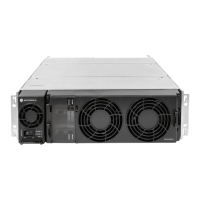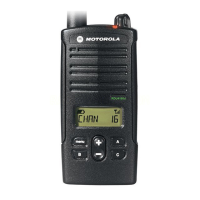MTR3000 Receiver Module: Specifications 2-3
2.2 Specifications
Table 2-1 shows the specifications of the MTR3000 Base Station/Repeater’s Receiver Module.
2.3 Functional Theory of Operation
The base station/repeater’s Receiver (Rx) is one Receiver on a single four-layer board. Refer to
Figure 2-2 for the block diagram of the Receiver module for UHF band and Figure 2-3 for 800/900
MHz band.
2.3.1 Functional Overview
2.3.1.1 Receiver Front End Circuitry
The RF signal enters the Receiver through a BNC-type RF connector, located on the bottom side of
the Receiver. The signal is then low-pass filtered, and the 1/2 IF and image frequency are filtered
through the preselector filter. This signal is then amplified using a low-noise amplifier (LNA), and
then further filtered to remove the image signal.
Table 2-1 Specifications of MTR3000 Base Station/Repeater’s Receiver
Parameter
Specification
UHF 800/900 MHz
Frequency Ranges 403–470 MHz (UHF R1) or
450–524 MHz (UHF R2)
806–825 MHz & 896–902 MHz
Electronic Bandwidth Full Bandwidth (UHF R1 and R2) Full Bandwidth
Analog Sensitivity 12 dB SINAD, at
Rx BNC connector
0.257 uV (-118.8 dBm) 0.291 uV (-117.7 dBm)
Intermodulation Rejection 85 dB 85 dB
Adjacent Channel Rejection* 75 dB at 12 kHz, 80 dB at 25 kHz 75 dB at 12.5 kHz, 85 dB at 25 kHz
Spurious and Image Response Rejection 85 dB 90 dB
Intermediate Frequencies 1st : 73.35 MHz
2nd : 2.25 MHz
1st : 73.35 MHz
2nd : 2.25 MHz
RF Impedance 50 Ω 50 Ω
Current Draw (Maximum) 0.05A from 14.2 VDC supply
0.5A from 10 VDC supply
0.13A from 8 VDC supply
0.05A from 14.2 VDC supply
0.5A from 10 VDC supply
0.13A from 8 VDC supply
Note (*) Per TIA 603

